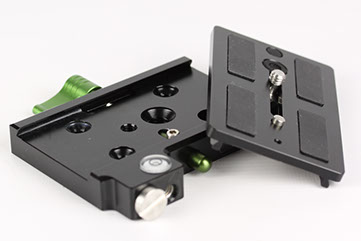Other tripod features
When you put a camera on a tripod, you want to first make sure the tripod is level. You could raise and lower the legs--an inch here, a quarter-inch there--until the tripod was level, but that's a huge pain.
Hence the invention of one the greatest tripod features: the "claw ball." Imagine a ball fitting perfectly into a bowl and you get the idea. In effect, the bottom of the tripod head is indeed shaped like a half-ball that fits into a bowl. The result: you can rotate the head in any direction and set the level with ease.
Without a claw ball, you'd have to raise or lower the legs until the tripod head was level. With a claw ball all you do is get the camera roughly level using the legs—and then fine tune it by rotating the claw ball. When you get it perfectly level (there is a level-bubble on the tripod), you tighten the claw ball so it is locked in place. This is about 100 times faster than raising or lowering the legs.
Another nifty feature of tripods is the "quick release plate." Quick-release plates have two parts. Part 1 is attached to the camera and stays attached. Part 2 is bolted to the tripod. The two parts can be snapped together (or apart) in an instant whenever you want to take the camera off the tripod (or put it on). This is quite a contrast to the old method of lining up a threaded screw every time you wanted to put the camera on a tripod.

Quick release plate

